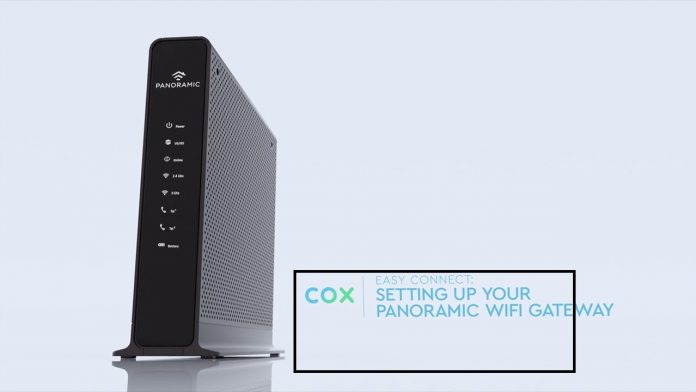Your connection is slow and you are not satisfied with your service provider? You want to install a reliable internet connection, but you do not know which solution is the most optimal for you? Note that two of the main technologies used to connect to the internet are: DSL and cox cable internet. Each of its two technologies has its own characteristics.
Table of Contents
Coaxial cable
The cox cable internet is a technology of data transmission digital formerly used for television antennae. It is the cable that joins the station to the antenna in the form of a rake.
Today it is also used to transmit the internet connection. This is made possible by HFC technology: hybrid coaxial fiber commonly known as FTTLA: Fiber To The Last amplifier. It then consists of joining an amplifier located in a building to the telephone exchange with optical fiber. Then, we join this amplifier to the subscriber’s house with the coaxial cable for the last meters of the connection.
The advantages of connection technology via coaxial cable
The cox cable internet offers the advantage of confining information within it. Thus, it thus facilitates the efficient transmission of information from any location. This technology also has the advantage of providing a connection speed significantly higher than that of the Internet connection via ADSL.
It can withstand a long transmission of information with a more or less wide bandwidth.
The limits of connection technology via coaxial cable
The coaxial cable is a difficult technology to deploy because of its weight, its rigidity, and its particular connection.
Along the cox cable internet, part of the transmitted information is lost or attenuated. We note in particular with the Internet connection via the coaxial cable that the higher the frequency of information transmission, the greater the losses.
The coaxial cable is designed to prevent interference, however, in an environment with strong electrical noise, it may cause problems. The reliability of the data is at stake with this problem.
Also, the fact that the coaxial cable is an electrical current conductor, installations made with this type of cable are largely vulnerable to lightning damage.
Comparison of connection speeds provided by coaxial cable, ADSL and optical fiber
The connection speeds emitted by these last 3 technologies can all be significant.
Here are some figures to help you make the best choice for Internet connection technology :
Maximum speed with ADSL: 15 Mbit per second;
Maximum VDSL speed: 100 Mbit per second. And to reach this maximum speed suggested by VDSL, the subscriber will have to be located less than half a kilometer from the telephone distributor. This is an unlikely event;
Maximum speed with coaxial cable: 800 Mbit per second;
Maximum speed with optical fiber: 1 Gbit per second.
From all of the above, we conclude that the connection with optical fiber remains the optimal solution to enjoy a secure Internet connection, ultra-high-speed and without risk of congestion.
What is DSL?
The DSL (digital subscriber line) incorporates all communication standards allowing the transmission of digital data at high speeds over a conventional telephone subscriber line (a copper pair of 6 km maximum envisaged).
There are two main DSL technologies on the market: ADSL and VDSL. The latter ensures faster browsing speed than ADSL, in uplink speed (also called upload) as in downlink speed (also called download)
What is a coaxial cable?
Access by coaxial cable is only available in large cities. This connection mode passes the internet signal via HFC “ hybrid coaxial fiber ” technology. It offers a maximum link speed of 800 Mbit / s in the downlink and 40 Mbit / s in the uplink.
What are the differences between these two technologies?
DSL and cable are two different technologies because they do not have the same mix of services.
In terms of offers: launch of promotional offers, deployment of new internet technologies: Canadian operators develop their marketing strategy regularly in order to acquire new customers and gain new market share.
The prices offered to vary depending on the internet provider and the connection method chosen. Indeed, there are those who offer identical prices whether for cable or DSL, and those who charge high prices for DSL technology.
Among the many packages available on the market, we recommend that you choose an unlimited internet package to save your money.
Installation: Installing the DSL is more complex than installing the cable.
In terms of speed: to promote their offers, operators highlight the speed of the connection, that is to say, the speed at which digital information is transmitted to your PC via the Internet.
Downlink speed: this is the internet data flow that you receive on your line.
Upstream speed: this is the data flow that you send from your line.
Good to know: the higher the speed promised, the faster the connection.
What is the best choice for you?
Generally speaking, cox cable internet is faster than DSL. Those who need high speed to download large files, play or stream, HFC presents an ideal solution, even if the speed is shared and it can fluctuate. For people with limited needs, they can perfectly limit themselves to DSL.
Cable – optical fiber: two different technologies
Both technologies allow very high-speed Internet. And for years, there has been confusion between FTTH technology and FTTLa technology, the two then being associated with fiber. But, since 2016, the debate between the “real” fiber (FTTH) and the “false” fiber (FTTLa) is settled. The operators must now clearly differentiate between the two. Because FTTH technology is an optical fiber and FTTLa technology is cable. The differences between the two are very real.
The first means “Fiber To The Home” when the second means “Fiber To The Last amplifier”. And therein lies the difference: the final part of the network is not the same.
With FTTH technology, the subscriber is connected to the optical fiber from end to end. A fiber is pulled between the Optical Connection Node (NRO) and the interior of the housing to be connected to a modem. Signal transmission is in light form.
With FTTLa technology, it’s different. Instead of going to the subscriber’s home, the fiber network stops at the optical node, generally a street cabinet or a box in the cellar of a building. But, from the optical node, on the last meters to the home, the data is routed via a coaxial cable, the same one used for the broadcasting of cable television. We also speak of optical fiber with coaxial termination. Signal transmission is in electrical form
Another difference between the two is the nature of the driver. Optical fiber is made up of glass or plastic wires when the coaxial cable is made of copper. A significant difference that has an obvious impact on the performance of FTTH and FTTLa technology, the former being better than the latter.
Currently, SFR, RED, and La Poste Mobile are the only three operators to offer Very High-Speed Internet with FTTLa technology. All others use FTTH technology.
Cable – optical fiber: it’s also a matter of speed
By their nature, fiber optic and cable technology do not offer the same performance. For the Internet user, the difference is mainly made on the speed of the Internet connection. With fiber optics, the maximum speed in reception is 8 Gb / s (1Gb / s most often) and 600 Mb / s in transmission. With cable, the maximum speed is 1 Gb / s in reception and 100 Mb / s in transmission. An Internet connection via fiber optics is, therefore, faster than with cable.
However, both technologies allow very high-speed Internet. And to browse the Internet, watch a video streaming or download a file, the difference between the two is not obvious. It is much more suitable for sharing with friends or sending large files to the cloud.
Optical fiber more easily accessible than cable
As of October 1, 2019, 16.7 million households in 8000 surrounding municipalities were eligible for fiber optics. At the same time, 9.5 million dwellings in more than 1,000 municipalities were wired. Optical fiber is, therefore, more widely used than cable. A trend that should continue to grow. In fact, in its France THD plan, the state undertook to guarantee Very High Speed for all in 2022, 80% of which via optical fiber.
There are three types of internet connection:
via telephone line, cable (television) or fiberglass. Sometimes you have the choice between these three technologies, sometimes not. Small summary.
DSL, cable, and fiberglass are three forms of broadband internet, each with its advantages and disadvantages.
Via the telephone line
The internet via the telephone line is designated by the acronym DSL (Digital Subscriber Line).
The main DSL internet providers are Proximus and Scarlet, but there are also smaller operators such as EdpNet or Dommel who use the Proximus network.
As for speed, it essentially depends on the distance: on the one hand, the distance between the home and the distribution box to the street and, on the other hand, the distance between this same distribution box and the central nearest neighborhood.
If you live far from a central office, you may encounter problems while surfing the internet.
In this case, it is to your advantage to favor a wired connection.
Tip: on the Proximus website, you can check the maximum speed available at your address.
Another big disadvantage of DSL technology: the connection is slowed down if you surf and watch TV at the same time because the latter absorbs a good part of your bandwidth.
On the other hand, the DSL solution is less expensive, especially if you opt for a basic package including the Internet, telephony, and television.
There are two DSL technologies: ADSL and VDSL, the latter offering higher download speeds.
VDSL2 with vectorization is the most recent variant, with download speeds (theoretical) of 100 Mbps for downloads and 15 Mbps for downloads, as well as speeds comparable to that of certain cable subscriptions.
The possibility of using VDSL technology does not depend on you, but on the availability or not of the technology at your address.
Via cable
In terms of technology, the wired connection differs radically from the DSL connection.
Indeed, the connection is not made via the telephone line, but via a coaxial cable.
The main suppliers are Telenet, Voo, and Orange.
Compared to the traditional telephone line, the coaxial cable provides higher download speeds – currently up to 400 Mbps for download and 40 Mbps for download at Telenet – and you do not experience any slowdown if you surf and watch TV at the same time.
For the speed criterion, we, therefore, favor the wired internet.
However, for cable operators, there is another aspect to take into account: the active presence of a large number of cable users on the same part of the network will inevitably affect browsing speed.
If your neighbors subscribe to the same cable operator as you, you may experience a slowdown during peak hours.
Via fiberglass
DSL and cable technologies have one thing in common: both use electrical signals carried by a copper cable.
On the other hand, in the case of fiberglass, the signals are sent via light, which allows even higher speeds.
Unlike cable and DSL, a fiberglass connection promises an identical download speed for both download and load.
Fiberglass cables are very thin and therefore quite fragile.
They are more vulnerable than copper cables, but once laid, they resist the most common risks, such as humidity, so that the internet signal is more stable.
At present, the individual has only limited access to the internet via fiberglass.
It is even unavailable at Telenet because this operator has chosen to continue to invest in the current cable infrastructure.








